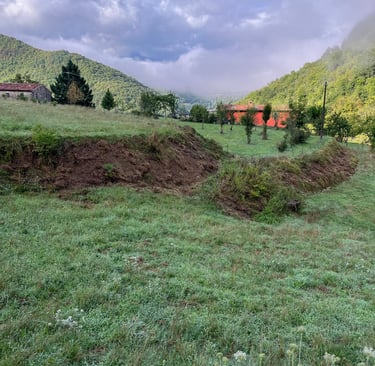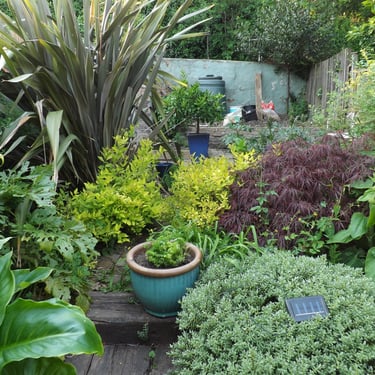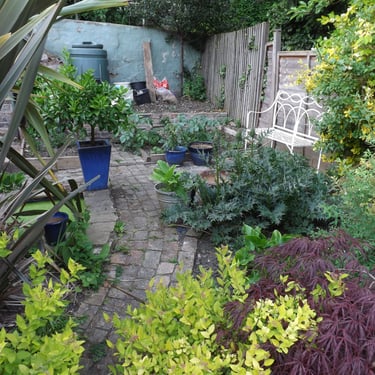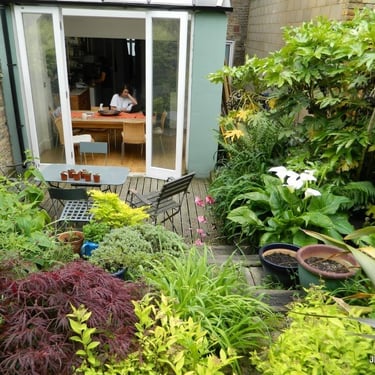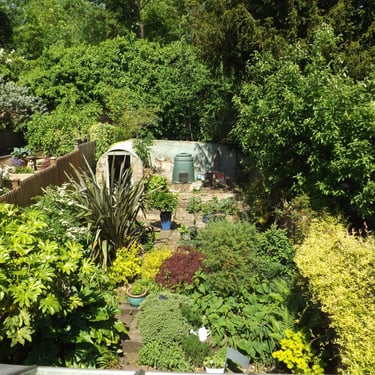Wild boars ate my lawn, sort of
Our local wild boars (cinghiale) popped round recently for a bit of a party on my lawn
10/6/20253 min read
Wild boars, or cinghiali in Italian, are fascinating creatures that seem to have developed quite an interest in the grassy areas around the house.
One thing I’ve learned over the years of living in an area heavily populated by wild animals is how smart they are.
It’s like having your very own four-legged stalker. If we go away for the weekend, the deer are at the house straight away, chewing up my trees. It feels quite personal as well. After so many incidents of deer damaging trees, I started planting the same varieties that grow wild in the woods around me. It didn’t make any difference—I have the same beech, maple, hawthorn, wild cherry, and wild plum. walnut and pine that grow in the woods.
But they still prefer mine. They must walk past hundreds of identical trees to come up to my place and chew on mine instead.
This time it was the cinghiale that decided to really make my day. And it’s not the first time. We’ve been cultivating lawns around the houses for some time now—not because I particularly like lawns, but because it was the easiest way to maintain the spaces and keep them neat and tidy while I was concentrating on building the houses.
I’m not a massive fan of lawns. The pictures here are of our old garden in London—not a blade of grass anywhere—and that’s how I imagine the garden looking at La Rupina. The issue is that our London garden is a tiny fraction of the size of the one in Italy, so doing something like this is going to be a big job, so for now, it has to be lawns.
The first time the boar dug up our garden was three years ago, when they tore up the upper and lower lawns. That was quite a mess. The next year it was the same area, but not as bad, so we managed to tidy it up fairly quickly.
This year, though, they really made a good job of it. They started with the banks of the terracing in early August. I have to say, they did a very neat job—carefully following the line of the top and bottom of the bank, systematically digging up the entire area for the whole length of one bank. No more, no less, and they missed nothing. These banks are large, about 3 m high and roughly 100 m long. That’s a serious amount of work, and probably done in a single night.
Then in October, we were away, and I got a video from our neighbour showing the damage from their latest visit. I think they noticed the car was gone and thought, Yeah, let’s go and dig it over—give him a nice surprise for when he comes back.
So why do they like my lawns so much that they come round each year and dig them up like this? The thing about cinghiali is that they are very focused and clever. They don’t do anything unless there’s a good reason for it.
First, there’s the obvious: short grass is easier to dig up and turn over than long grass, because taller plants have deeper roots. But it turns out there’s another reason. To keep the grass under control we use a ride-on mower set to the highest cut, and we recycle the grass cuttings by mulching them back into the lawn. This retains a lot of depth, the highest cut is about 100mm or 4 inches, cutting the grass like this adds a lot of nutrients to the soil and maintains a wide variety of plants which in turn supports lots of bugs, above and below ground.
We get a lot of moles in our lawns looking for worms and others bugs and we get big bright green lizards above ground looking for there dinner, we also see slow worms and toads who seem to like the wetter weather and plenty of grass snakes.
So it turns out our lawns have enough bugs for a night’s feast—and that’s what keeps the boar coming back for more.
Well, they’d better enjoy it while it lasts. The building work is coming to an end, and when it does, the wild boar won’t be the only ones digging up the grass.

